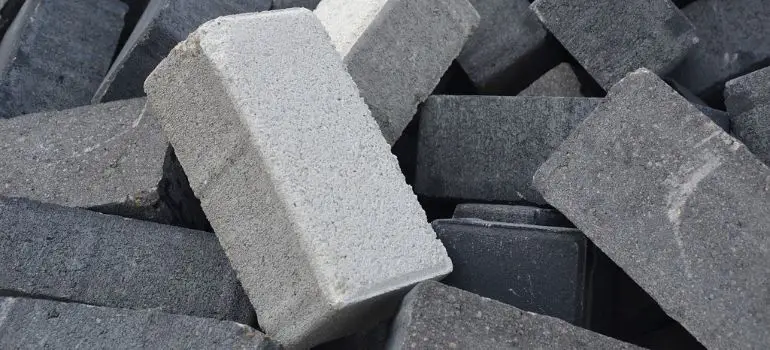In the world of construction and engineering, one of the fundamental questions that often arises is, “How much weight can a concrete block hold?” Concrete blocks, also known as concrete masonry units (CMUs), are widely used for various construction purposes due to their durability and strength. In this article, we will explore the factors that determine the weight-bearing capacity of concrete blocks, providing valuable insights for builders, engineers, and anyone interested in construction.
Understanding Concrete Blocks
Before delving into the weight-bearing capacity of concrete blocks, let’s have a closer look at what they are. Concrete blocks are rectangular-shaped construction materials made from a mixture of cement, aggregates, and water. They come in various sizes and densities, making them versatile for different applications.
Types of Concrete Blocks
- Standard Concrete Blocks (CMU): These are the most common type of concrete blocks used in construction.
- Hollow Concrete Blocks: These blocks have hollow cavities, making them lighter and more versatile.
- Solid Concrete Blocks: These blocks are dense and provide greater strength.
Factors Affecting Weight Capacity
Several factors influence how much weight a concrete block can hold. Understanding these factors is crucial for ensuring the structural integrity of a building.
1. Block Type and Density
The type of concrete block used is a crucial factor when considering its weight-bearing capacity. Concrete blocks come in various types, each with its unique characteristics, making them suitable for different applications. Understanding the type and density of a concrete block is essential for determining its load-bearing capabilities.
Standard Concrete Blocks (CMU)
Standard concrete blocks, also known as concrete masonry units (CMUs), are the most commonly used type in construction. These blocks are solid, dense, and provide substantial strength. Due to their durability and weight-bearing capacity, they are a preferred choice for various structural elements.
Hollow Concrete Blocks
Hollow concrete blocks are designed with hollow cavities, making them lighter and more versatile. While they may not have the same load-bearing capacity as solid blocks, their reduced weight makes them suitable for applications where weight is a concern. Hollow blocks are often used in non-load-bearing walls and partitions.
Solid Concrete Blocks
Solid concrete blocks, as the name suggests, are completely solid throughout. This density gives them excellent load-bearing capabilities, making them suitable for supporting heavy loads in construction. They are often used in load-bearing walls and structural elements that require maximum strength.
2. Compressive Strength
Compressive strength is a critical factor when assessing the weight-bearing capacity of concrete blocks. It is measured in pounds per square inch (PSI) and indicates the maximum load a concrete block can withstand before it starts to fail or crack. Understanding the compressive strength of concrete blocks is essential for ensuring their suitability for various construction applications.
Importance of Compressive Strength
Compressive strength is a reliable indicator of a concrete block’s ability to withstand vertical loads, such as the weight of a building or structural elements. The higher the PSI value, the stronger the concrete block, and the more weight it can support without deformation or failure.
PSI Ratings
Concrete blocks come with different PSI ratings, typically ranging from 1,900 to 3,000 PSI for standard concrete blocks. Solid concrete blocks often have higher PSI ratings, making them suitable for load-bearing purposes, while hollow blocks may have lower PSI ratings due to their hollow cavities.
Choosing the Right PSI
Selecting the appropriate PSI rating for a construction project depends on the intended load and structural requirements. Engineers and builders carefully assess the expected loads and conditions to determine the PSI rating needed for concrete blocks used in various parts of a building.
Testing Compressive Strength
The compressive strength of concrete blocks is determined through standardized testing procedures. Samples of the blocks are subjected to controlled loading until they fail. The PSI rating is then calculated based on the maximum load the block can withstand.
3. Block Dimensions

The size and thickness of a concrete block play a role in its capacity. Larger and thicker blocks generally have higher weight-bearing capabilities.
4. Load Distribution
Load distribution is a critical factor that affects the weight-bearing capacity of concrete blocks. It refers to how the weight or force is spread over the surface of the blocks when they support a load. Proper load distribution is essential to ensure the structural integrity of a building or construction element.
Uniform Load Distribution
Uniform load distribution occurs when the weight or force is evenly spread across the surface of the concrete blocks. This is the most favorable condition for concrete blocks, as it minimizes stress concentration on specific areas. Blocks are better able to handle uniformly distributed loads, ensuring stability and longevity.
Concentrated Load Distribution
Concentrated load distribution involves the weight or force being applied to a specific point or area on the concrete block. This type of load distribution can create stress points and increase the risk of block failure, especially if the load exceeds the block’s capacity. Engineers must carefully consider concentrated loads and take measures to distribute them more uniformly when necessary.
Uneven Load Distribution
Uneven load distribution occurs when the weight or force is applied irregularly across the surface of the blocks. This can result from imbalanced loads or improper construction practices. Uneven load distribution can lead to structural instability and the potential for block damage or failure over time.
Mitigating Uneven Load Distribution
To mitigate the effects of uneven load distribution, builders and engineers may use additional reinforcement, such as steel beams or columns, to ensure that the weight is distributed more evenly. Proper construction techniques and adherence to building codes and standards are also crucial in preventing load distribution issues.
5. Environmental Conditions
Environmental factors, such as temperature and humidity, can affect the performance of concrete blocks over time. Extreme conditions may weaken the blocks’ structural integrity.
Determining Weight Capacity
Calculating the exact weight a concrete block can hold involves complex engineering formulas and considerations. It is best left to professionals who can perform structural analyses. However, as a general guideline:
- Standard concrete blocks can typically support up to 1,700 to 2,500 pounds per square inch.
- Solid concrete blocks may hold even more, depending on their density and dimensions.
Practical Applications
Concrete blocks are incredibly versatile and find numerous practical applications in the world of construction and engineering. Some of the most common uses include:
- Building Foundations: Concrete blocks are a popular choice for constructing building foundations. Their strength and durability provide a solid base for structures of various sizes and types.
- Retaining Walls: When properly designed and engineered, concrete blocks can be used to create sturdy retaining walls. These walls help prevent soil erosion and provide structural support for changes in elevation.
- Load-Bearing Walls: In both residential and commercial construction, concrete blocks are frequently used for load-bearing walls. Their ability to support vertical loads makes them essential in creating stable and secure buildings.
- Pavements and Walkways: Concrete blocks can be used to create durable pavements, walkways, and driveways. Their uniform size and shape make them easy to install in a neat and organized pattern.
- Partition Walls: In interior construction, concrete blocks are often used to create partition walls. These walls separate different sections of a building, providing privacy and defining spaces.
- Sound Barriers: Due to their density, concrete blocks are effective at reducing sound transmission. They are used as sound barriers along highways and in industrial settings to minimize noise pollution.
- Fire Resistance: Concrete blocks have excellent fire-resistant properties, making them a preferred choice for fire walls and structures in buildings that require fire protection.
- Decorative Elements: Beyond their structural uses, concrete blocks can also be used for decorative purposes. They come in various textures and finishes, allowing for creative design elements in landscaping and architecture.
- Raised Garden Beds: Concrete blocks are a popular choice for creating raised garden beds in both residential and community gardens. They provide a durable and customizable solution for gardeners.
- Industrial Applications: Concrete blocks find applications in industrial settings for creating sturdy storage areas, security barriers, and machinery enclosures.
Conclusion
In conclusion, the weight-bearing capacity of concrete blocks varies depending on factors like block type, compressive strength, dimensions, load distribution, and environmental conditions. It is essential to consult with structural engineers and follow building codes and standards when using concrete blocks in construction projects to ensure safety and durability.
FAQs
- Can concrete blocks be used for building foundations? Yes, concrete blocks are commonly used for building foundations due to their strength and durability.
- What is the difference between standard and hollow concrete blocks? Standard concrete blocks are solid, while hollow blocks have empty cavities inside, making them lighter and more versatile.
- Are there weight limits for concrete blocks in construction? Yes, there are weight limits, and they depend on factors like block type, size, and compressive strength.
- Do environmental conditions affect the longevity of concrete blocks? Yes, extreme environmental conditions can impact the structural integrity of concrete blocks over time.
- Where can I find high-quality concrete blocks for my construction project? You can find reliable suppliers of concrete blocks at reputable building material stores or by contacting construction supply companies.




